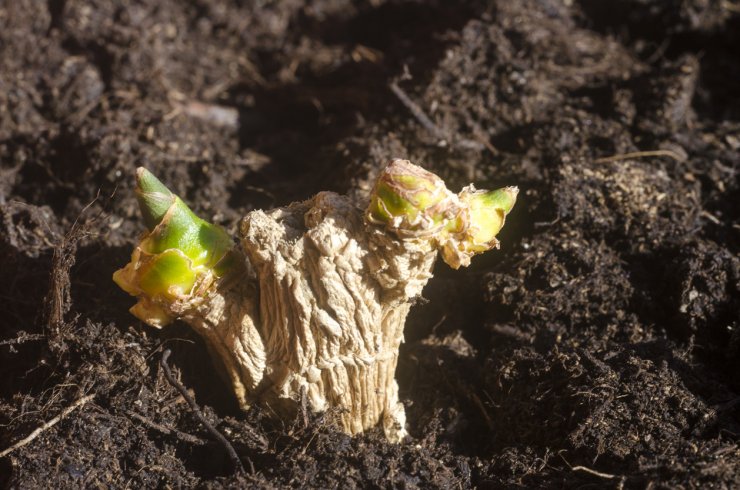
Seed Ginger in soil.
Plant your ginger in fresh soil; ginger prefers well-drained sandy or loamy soil. That can be a combination of potting soil and compost—just make sure that the soil is loose and well-draining. Compost is a component for planting your ginger, because it does double duty: it helps retain water (essential for thirsty ginger plants) and it releases nutrients into the soil. It’s a good idea to add a little perlite or vermiculite to add some “air space” to the soil; it will also help hold some of the water in the soil.
Ginger likes soil in the pH range of 5.0 to 6.5; amend your soil as needed to get to that range. If you’re growing your ginger indoors, you can keep it near a wall or set up a temporary partition around your plants to help hold in heat.
If you’re growing outdoors in a zone with frost, plant once the soil temperature has reached at least 55 degrees F. You can start your ginger indoors and then transplant it once the last frost is past; this is a good idea if you’re in a cooler hardiness zone.
When you do plant (whether transplant or rhizome), the “root” part of the plant should go no more than 6 inches deep, into an area with a little bit of fertilizer mixed into the bottom of the trench. Reserve some soil around the plants for eventual hilling; you’ll add soil to the base of the plant when you notice pink at the base of the plant stalk (that’ll be the tip of one of the rhizome buds, and you don’t want to expose them to direct sunlight).
Space your plants about 6 inches apart. If you’re planting a lot of ginger, space your rows about 3 to 4 feet (remember, ginger likes to spread out).
Just as with people, some companions are better than others. You can grow your ginger alongside some plants without them getting in each other’s way. Always be sure to give your ginger room to spread out; remember that those roots and rhizomes are going to go wide rather than deep. You can plant some of these nearby:
- Green onion
- Soybeans
- Sweet corn
- Sweet potato
- Cabbage
Here are some of the plants to keep away from your ginger:
- Tomatoes
- Peppers
- Eggplant
Tomatoes, peppers, and eggplant can build up bacterial wilt in the soil, and that’s bad news for ginger. This is also why, when you’re considering rotating your crops for soil health, you want to keep track of which plants benefit from being together, and which you should move to fresh soil.
What type of soil do you use to grow your ginger? Do you use compost at all? How do you keep the soil sufficiently aerated? What are your best tips for creating optimal soil for your ginger? Please share your techniques with us.


 Previous
Previous

